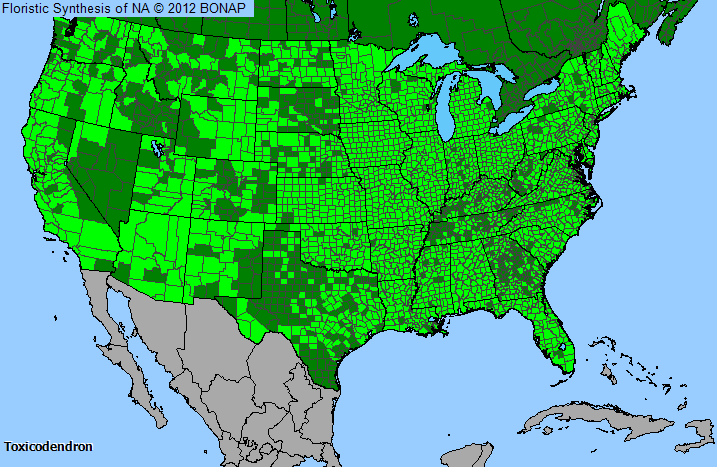
Plant Allergy Overview
Allergenicity
Severe
Pollen Season
Spring Summer
Type
Tree
Sub-Type
Deciduous
Allergy Information
Oleoresin, the allergen, causes a severe, delayed hypersensitivity or contact dermatitis 24 to 48 hours after contact with the plant. Aerial pollen has not been reported to cause pollinosis.
Genus Details
These poisonous plants, members of the cashew family, consist of woody vines and coarse shrubs that arise from extensive underground stems or rhizomes. Poison ivy, native to the eastern U.S., is found commonly along roads, growing on trees and walls. The woody vines have alternate, trifoliate leaves (hence the common cautionary saying: "if 3 leaves, let it be") with a smooth (glossy) surface with few or no lobes/dentatation, aerial roots, and white berries. Another species, poison oak, native chiefly to the south eastern U.S., has trifoliate leaves with each leaflet having 3-7 lobes. This plant often grows 2-6 feet tall. The species poison sumac, native to the eastern U.S., is a shrub that can grow to 21 feet tall with leaves that have 7-13 leaflets and light, yellow-gray berries in the autumn. These poisonous plants flower in spring and sometimes again in late summer to early autumn.
Pollen Description
Grains are prolate to spheroidal; the amb triangular with convex sides and 3-colporate or occasionally brevicolpate to porate. The colpi are typically long and narrow and the sexine is often striate.
Pollen grains are generally 25-30 micrometers.
Genus Distribution

The shaded areas on the map indicates where the genus has been observed in the United States.
 - Native, observed in a county
- Native, observed in a county  - Introduced, observed in a county
- Introduced, observed in a county  - Rarely observed
- Rarely observedSpecies in Poison-Ivy, Poison-Oak, Poison-Sumac Genus
Allergens & Plants Search
Enter a full or partial species name to find more information on one of over 1,200 potentially allergenic plants.
For example, you can find chenopods searching on "cheno"



